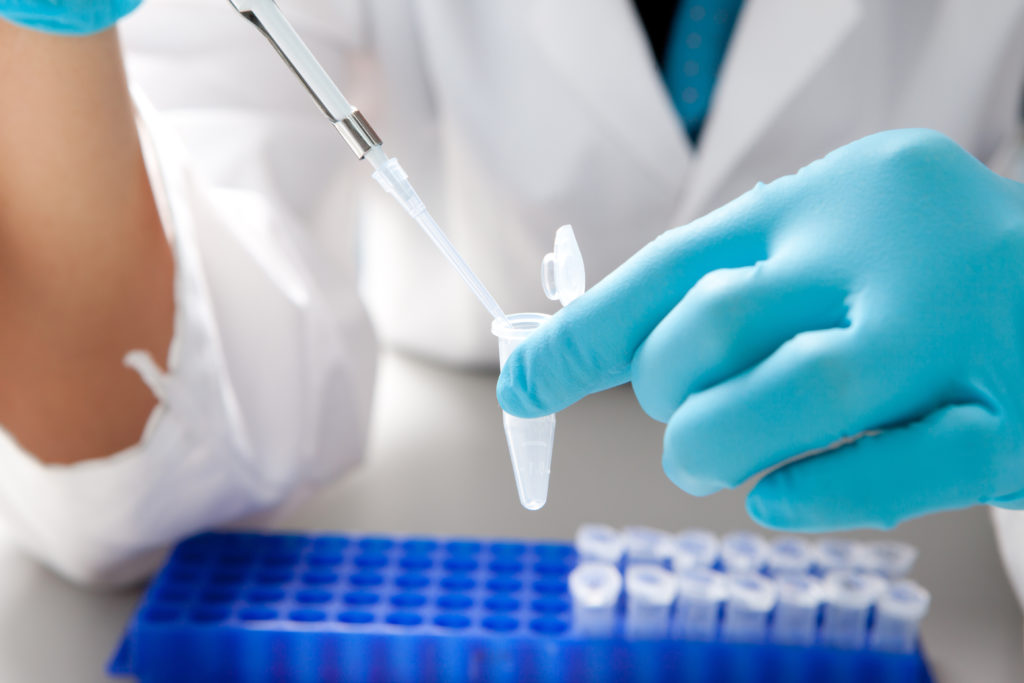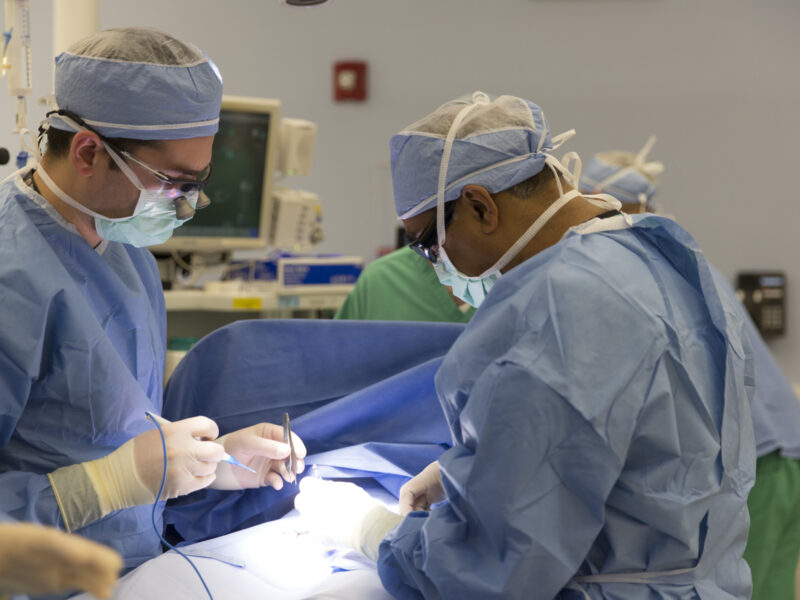Could Antimicrobial Peptides Be Biomarkers for Obstructive Uropathy?
Could Antimicrobial Peptides Be Biomarkers for Obstructive Uropathy? https://pediatricsnationwide.org/wp-content/uploads/2021/03/AdobeStock_42423701-1024x683.jpg 1024 683 Katie Brind'Amour, PhD, MS, CHES Katie Brind'Amour, PhD, MS, CHES https://pediatricsnationwide.org/wp-content/uploads/2021/03/Katie-B-portrait.gif- August 23, 2018
- Katie Brind'Amour, PhD, MS, CHES

New research reveals the expression of antimicrobial peptides — long associated only with infections — in children with obstructive uropathy, creating the potential for a wide range of clinical applications.
Previously only studied in the context of urinary tract and other infections, antimicrobial peptides (AMPs) — naturally occurring antibiotic molecules that our bodies may use to protect against infection — may also play a role in obstructive uropathy, according to a recent study conducted by urology and nephrology clinician-scientists at Nationwide Children’s Hospital.
Upon investigating the urine of children undergoing surgery for ureteropelvic junction obstruction (UPJO), the team identified a significant increase in the expression of AMPs compared to age- and sex-matched healthy controls. The findings were published in the Journal of Pediatric Urology.
“There was some precedent for believing AMPs may play a role in non-infectious etiologies, such as interstitial cystitis. As a result, we thought it would be worthwhile to explore urinary AMP expression in urinary obstruction,” says Christina Ching, MD, a member of the Section of Urology at Nationwide Children’s and senior author of the recent study. “Currently, our methods for diagnosing urinary tract obstruction rely on imaging techniques that are at times nonspecific and can subject the patient to radiation. Other potential less invasive means of diagnosing urinary tract obstruction in the form of biomarkers are needed.”
“We were encouraged when we found that the urothelium does produce detectable urine markers of non-infectious stress that are significantly associated with urinary obstruction,” she adds.
Dr. Ching and her colleagues collaborated to collect urine from 30 children without a current urinary tract infection at the time of UPJO surgery. They also collected urine samples from 15 age- and sex-matched healthy controls (matched 1:2). Laboratory analysis revealed significantly higher levels of nearly all studied AMPs (BD-1, NGAL, LL-37, and HIP/PAP; only HD-5 did not substantially differ) in children with UPJO. The team then identified optimal threshold values for the associated AMPs, each of which had significant odds ratios for predicting urinary obstruction.
“This shows that AMP expression is induced in non-infectious urinary tract pathology and potentially could be used as a biomarker of urinary tract obstruction; it sets the stage for a lot of future research directions,” Dr. Ching explains. “Right now, urologists and nephrologists follow everybody with hydronephrosis, which takes a lot of time, adds a lot of stress for parents and uses a lot of resources. If we could identify a difference in AMP levels between those children who get better on their own and those that don’t, AMP testing could offer a great way to tailor long-term follow-up and even surgery planning.”
A significant and sensitive relationship between AMP expression and obstructive uropathy could result in numerous potential clinical applications for AMP tests, including prediction of the clinical course of congenital hydronephrosis, confirmation of obstructive kidney injury requiring surgery, prediction of risk for UPJO-related infections, indication of the degree of recovery after surgery and much more. But researchers must first improve their understanding of the AMPs’ specific roles in the urinary tract. To do this, researchers must combine bench research with the study of general trends of AMP expression throughout the course of injury.
“The next step is to look longitudinally rather than taking a cross-sectional approach. That will help us understand how AMP levels vary over time and among patients with different ages, sex, ethnicity, disease severity, surgical and disease outcomes and other clinical differences,” says Brian Becknell, MD, PhD, a member of Nationwide Children’s Section of Nephrology, principal investigator in the hospital’s Center for Clinical and Translational Research, and coauthor on the recent study. “That information will help tell us whether the AMP levels have predictive value and how specific they can be for a variety of pathologies.”
Collaborators
The joint urology and nephrology research team at Nationwide Children’s has several AMP-related investigations already planned or underway, including basic research to understand the role of AMPs in infectious and non-infectious injury to the urothelium and their potential clinical utility. Dr. Ching is currently following the study’s UPJO surgery patients prospectively with repeat urine AMP checks to better understand the natural course of AMP production after a corrected obstruction.
“If we were to superimpose urine candidate biomarkers in the setting of managing congenital anomalies and identify reliable cutoffs for what’s ‘normal’ versus what’s associated with specific types of structural abnormalities in the urinary tract, that would be a very helpful addition to our diagnostic toolkit,” says Dr. Becknell. “In the future, if we’re monitoring levels of peptides, they may reflect a broad spectrum of disease, not just urinary tract infections. Once we better understand AMPs diagnostically and prognostically for obstruction cases, we can start to branch out to other patient populations.”
Reference:
Gupta S, Jackson AR, DaJusta DG, McLeod DJ, Alpert SA, Jayanthi VR, McHugh K, Schwaderer AR, Becknell B, Ching CB. Urinary antimicrobial peptides: Potential novel biomarkers of obstructive uropathy. Journal of Pediatric Urololgy. 2018 Mar 29. [E-pub ahead of print]
About the author
Katherine (Katie) Brind’Amour is a freelance medical and health science writer based in Pennsylvania. She has written about nearly every therapeutic area for patients, doctors and the general public. Dr. Brind’Amour specializes in health literacy and patient education. She completed her BS and MS degrees in Biology at Arizona State University and her PhD in Health Services Management and Policy at The Ohio State University. She is a Certified Health Education Specialist and is interested in health promotion via health programs and the communication of medical information.
-
Katie Brind'Amour, PhD, MS, CHEShttps://pediatricsnationwide.org/author/katie-brindamour-phd-ms-ches/April 27, 2014
-
Katie Brind'Amour, PhD, MS, CHEShttps://pediatricsnationwide.org/author/katie-brindamour-phd-ms-ches/April 27, 2014
-
Katie Brind'Amour, PhD, MS, CHEShttps://pediatricsnationwide.org/author/katie-brindamour-phd-ms-ches/April 27, 2014
-
Katie Brind'Amour, PhD, MS, CHEShttps://pediatricsnationwide.org/author/katie-brindamour-phd-ms-ches/April 28, 2014
- Posted In:
- Features









